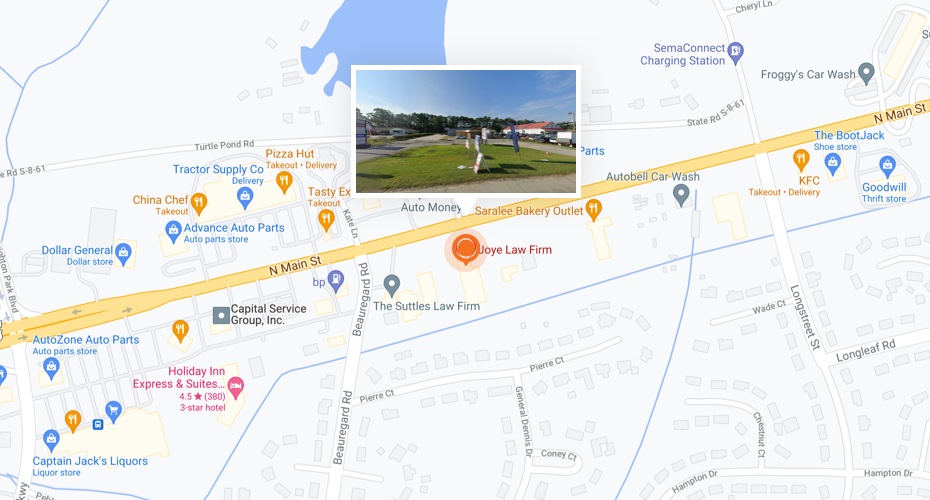
Medical professionals are expected to provide a certain level of care to patients to avoid unnecessary complications and injuries. This is especially true during pregnancy, labor, and childbirth.
Many things can go wrong during a birth that can result in serious injury to the baby and/or the mother. Birth injuries can be extremely severe and can lead to permanent disability or even death.
Victims of birth injuries caused by the negligence of a doctor have legal rights that allow them to recover financially for their injuries.
If you or your child has suffered any type of birth injury, please call the experienced Columbia birth injury attorneys at the Joye Law Firm to discuss your rights.
Common Birth Injuries
Many different types of injuries can happen during labor and delivery. While some birth injuries can clear up on their own and pose no long-term risk to the child, others can leave a child with serious disabilities and can affect them for the rest of their lives. Some of the more common birth injuries include the following:
- Brachial Plexus Injuries — Also known as Erb’s palsy, injuries to a child’s brachial plexus nerves result from trauma during delivery when the doctor improperly pulls on the baby. Resulting nerve damage can be relatively minor or can completely disconnect nerves from the spinal cord, leading to paralysis.
- Perinatal Asphyxia — This injury results from significant oxygen deprivation of the child during delivery, which can occur due to compression of the umbilical cord, uterine rupture, placental separation, among other reasons. If a doctor does not identify the oxygen deprivation and act quickly, the child can suffer serious brain damage.
- Intracranial Hemorrhage — Commonly referred to as a brain bleed, a hemorrhage inside the skull can result from improper use of vacuums or forceps, incorrect delivery methods, or other mistakes that can lead to birth trauma. Bleeding can cause the child’s intracranial pressure to increase to dangerous levels and can cause long-term brain damage.
- Spinal Cord Injuries — Damage to a child’s spinal cord can occur from use of forceps or over-stretching. Victims of spinal cord injuries at birth can have permanent neurological damage or may even be permanently paralyzed.
- Cerebral Palsy — Cerebral palsy is a lasting condition caused by brain damage during birth. This disorder can seriously affect a child’s movement and coordination abilities and can cause weak muscles, stiffness, sensory deficiencies, seizures, cognitive impairments, and more.
Children who suffer serious birth injuries may require a lifetime of medical care and may experience physical and/or cognitive limitations. A birth injury has the potential to completely change the life of an otherwise healthy child and their family.
Injuries at Birth Due to Medical Negligence
A doctor is expected to provide care that another similarly trained doctor would provide in a similar situation. When a doctor fails to do this, they can be found negligent and can face a claim for medical malpractice. The following are only some examples of acts during labor and delivery that may be considered to be negligent by the court if an injury resulted: 
- Failure to identify serious conditions in the mother of child that may lead to complications during birth
- Not properly monitoring the child’s oxygen levels, heart rate and other vital signs
- Not acting quickly enough to perform an emergency C-section or take other action if the mother or child’s health is in danger
- Not using proper care during the delivery that results in traumatic injuries
- Not identifying potential health issues in the child following delivery or not providing necessary emergency care for the child
It is important to understand that not every mistake made by a doctor will lead to a claim for medical malpractice. Simple errors that did not breach the duty of care for medical professionals will not lead to recovery. Instead, you must prove that the doctor fell below the standard of care that should have been provided in that type of situation. The skilled birth injury lawyers at the Joye Law Firm understand how to assess whether medical negligence occurred and whether you have a viable claim for medical malpractice.
Investigating a Birth Injury Claim Requires Significant Resources
Birth injury claims often require a significant amount of investigation and evidence gathering. Medical negligence is a complicated issue that requires an understanding of the accepted standard of care, and reviewing the conduct of hospital staff and medical professionals often requires sifting through a significant amount of paperwork. In addition, whether or not a particular decision or course of conduct was negligent often requires consulting with experts who are themselves medical professionals.
Gathering and reviewing this type of evidence can take hundreds of hours and tens of thousands of dollars. As a result, it is not possible for most birth injury accident victims and/or their parents to effectively bring a legal claim on their own. Fortunately for victims, our law firm has the resources required to represent birth injury victims and will cover the up-front costs associated with litigating your case. Furthermore, you will not be required to pay anything for legal representation unless we successfully recover compensation on your behalf, and any payment we receive will come directly out of any settlement or award that you obtain. As a result, you will never need to reach into your own pocket to pay for legal representation.
Get Help Today From Our Columbia Birth Injury Law Firm Today
If your child was injured during birth or has developmental issues that you suspect are related to a medical error, you should speak with a lawyer immediately. Birth injury cases are extremely complicated and it is advisable for victims and their parents to retain a skilled attorney who has successfully represented other birth injury victims in the past. At the Joye Law Firm, we are committed to protecting the legal rights of people hurt by the negligence of others. To schedule a free consultation with one of our Columbia personal injury lawyers, call our office today at (888) 324-3100.
Joye Law Firm Columbia Office Location
1333 Main St #260,
Columbia, SC 29201
(803) 618-4189




























